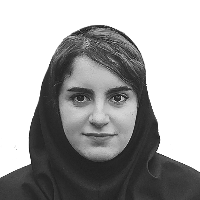The Red Hue and Color Sharpness in Qajar Architecture, Color Research on 20 Springhouse Ceilings in Tabriz
Author(s):
Article Type:
Research/Original Article (دارای رتبه معتبر)
Abstract:
Being one of the aesthetic elements, color has always held a significant position in Iranian architecture. Observation of the works of architecture remaining from the Qajar era suggests the idea that sharp colors have had a greater application and have been more warmly embraced. For this purpose, the houses in Tabriz –the city known as Qajar Princes’ place of residence and home to some of the best set of residential buildings- have been selected for the present case study. On the other hand, springhouses have always had distinct ornaments and striking colored ceilings given their pivotal role for family get-togethers. In other words, the main reason behind choosing the ceilings of these spaces for the present case study is their distinguished and unparalleled position compared to the other structural canopies in similar spaces. The present study seeks to investigate the chromatology of Qajar era architecture and verify the idea indicating the sharpness and vividness of the colors used in it through monitoring the frequency of hues and chroma of the ceilings from this era. The study seeks to answer the following questions: Which hues are more widely present in the case study? Which level of chroma would the colors used be categorized into, and does this level of chroma place them in the vividness range? The statistical population comprised 43 ceilings, all of which were determined through field study and filtered based on the important criteria of the presence of color, authenticity, and health. Eventually, 20 ceilings that were mainly remaining from the Qajar era were selected, and their color ranges were identified using Mansell and ISCC-NBS color systems. The reflected plan of the ceilings was then drawn and color contents were calculated through field study, photographing, and the use of drawing and illustration software. The research method was descriptive-analytic and data collection was carried out through desk research and field study. Results indicated that the color palette (frequent colors) of the ceilings mainly included the three hues of "red, blue, and green", with the colors from the red hue ranking first in terms of quantity at 36.33%. Color chroma assessment indicated that most (81.48%) of the colors used have been selected from a color range with high chroma levels which appears to be a deliberate strategy to imply more sharpness and articulation. The result of such an architectural taste is the dominant establishment of the used colors in the vivid range, a taste that has probably been close to the preferable color taste of its time. The impressiveness of the ceilings' color coordination is undoubtedly largely owing to the presence of the color white. This color has appeared in an embossed form and saved the final composition from color accumulation and chaos by enclosing the colors. Falling into the category of unpainted materials, the color white has a quantity almost equal to the red hue at 35.9%, which indicates that Qajar architects and designers had a great level of artistic skill and wisdom to manage and organize colors.
Keywords:
Language:
Persian
Published:
HOnar - ha - ye - ziba Memari - va - shahrsazi, Volume:26 Issue: 3, 2022
Pages:
21 to 30
magiran.com/p2490288
دانلود و مطالعه متن این مقاله با یکی از روشهای زیر امکان پذیر است:
اشتراک شخصی
با عضویت و پرداخت آنلاین حق اشتراک یکساله به مبلغ 1,390,000ريال میتوانید 70 عنوان مطلب دانلود کنید!
اشتراک سازمانی
به کتابخانه دانشگاه یا محل کار خود پیشنهاد کنید تا اشتراک سازمانی این پایگاه را برای دسترسی نامحدود همه کاربران به متن مطالب تهیه نمایند!
توجه!
- حق عضویت دریافتی صرف حمایت از نشریات عضو و نگهداری، تکمیل و توسعه مگیران میشود.
- پرداخت حق اشتراک و دانلود مقالات اجازه بازنشر آن در سایر رسانههای چاپی و دیجیتال را به کاربر نمیدهد.
In order to view content subscription is required
Personal subscription
Subscribe magiran.com for 70 € euros via PayPal and download 70 articles during a year.
Organization subscription
Please contact us to subscribe your university or library for unlimited access!



